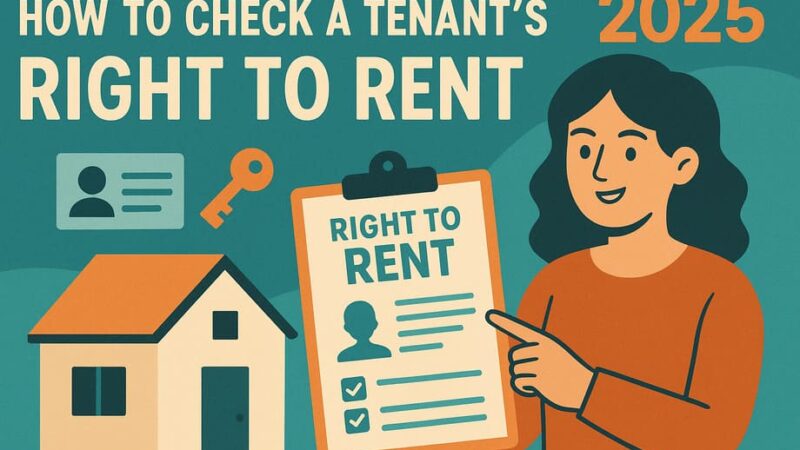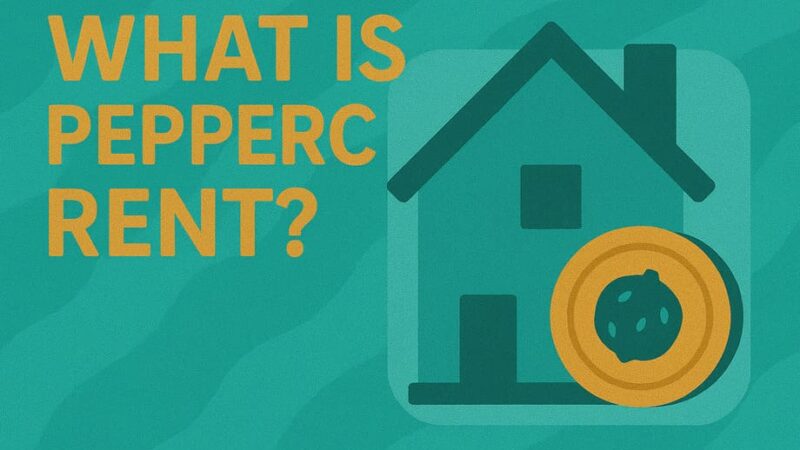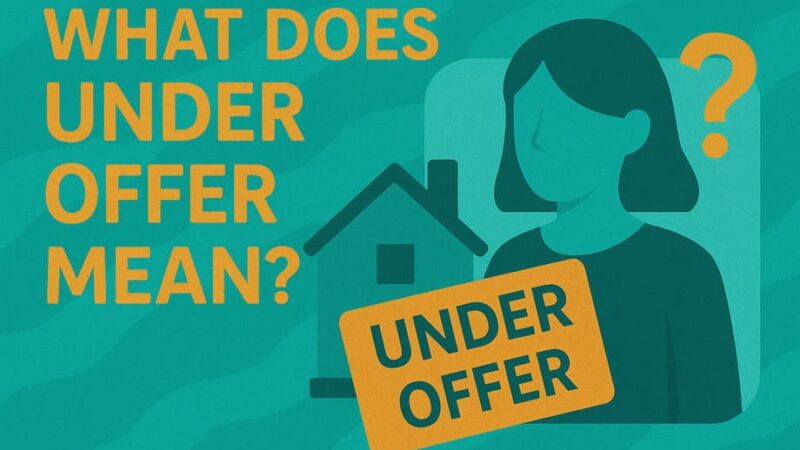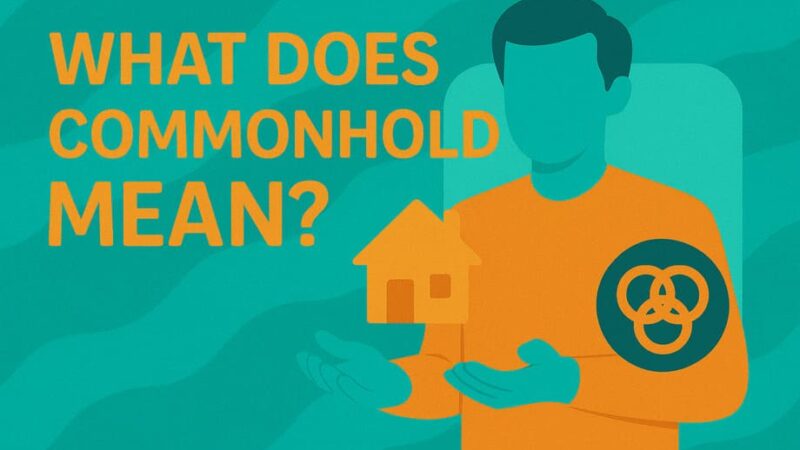Who Pays for Repairs Landlord or Tenant in the UK?
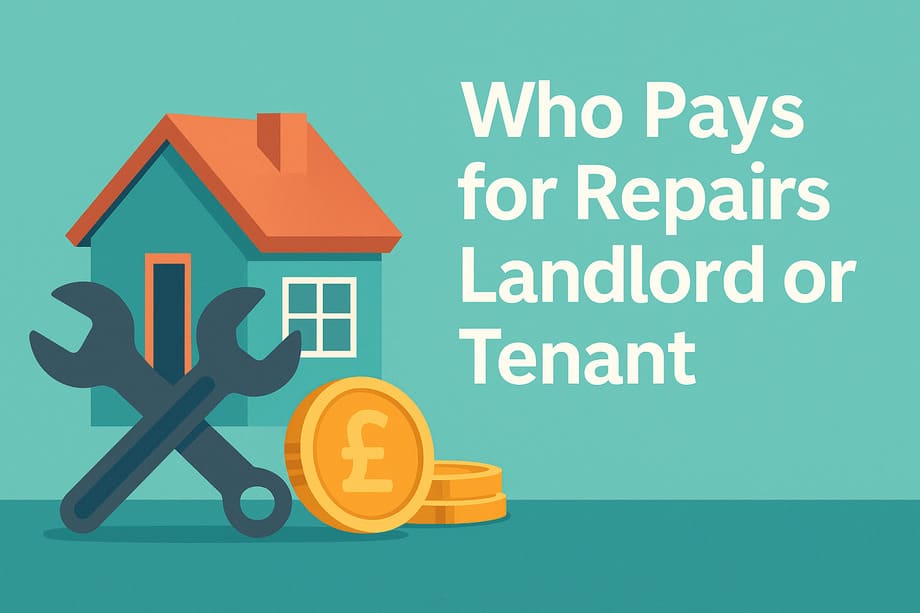
When something breaks in a rental property, one question immediately arises: who pays for the repair? This seemingly simple question often leads to confusion, disputes, and strained relationships between landlords and tenants.
The answer isn’t always straightforward. While landlords have clear legal obligations for major repairs, tenants also bear responsibility for certain types of damage and maintenance. Nearly 60% of landlords have had disagreements with tenants over maintenance, making this one of the most contentious issues in rental properties.
Whether you’re a landlord trying to understand your legal obligations or a tenant wondering if you’ll be charged for that broken window, understanding repair responsibilities will help protect your interests and avoid costly disputes.
This guide explains exactly who pays for what when it comes to repairs in UK rental properties, covering everything from legal requirements to grey areas that often cause confusion.
What Are Repair Responsibilities?
Repair responsibilities in rental properties are governed by a combination of legal requirements, tenancy agreements, and common law principles. Not every repair issue has a clear-cut answer, and understanding the framework helps both landlords and tenants navigate these situations.
The responsibilities fall into several categories:
Legal Landlord Obligations: Mandatory repairs that landlords must handle regardless of tenancy agreements Tenant Responsibilities: Day-to-day maintenance and damage caused by tenant actions Contractual Arrangements: Additional responsibilities specified in tenancy agreements Grey Areas: Situations where responsibility depends on specific circumstances
The key principle is that your landlord is always responsible for most repairs in your home, while as a tenant, you are responsible for looking after your home, reporting repairs or damp and letting the landlord or contractors in to inspect the property or fix problems.
Getting these responsibilities clear from the start prevents the majority of disputes and ensures both parties understand their obligations.
Legal Responsibilities of Landlords vs Tenant Responsibilities
What Are Legal Landlord Responsibilities?
Legal landlord responsibilities are the repairs that landlords must handle by law, regardless of what the tenancy agreement says. These come primarily from Section 11 of the Landlord and Tenant Act 1985.
When landlords must handle repairs:
- The property’s structure and exterior need maintenance
- Essential systems like heating, plumbing, or electrical require work
- Safety equipment needs repair or replacement
- Any damage occurs to areas covered by legal obligations
Key features:
- Your landlord is always responsible for these repairs even if your tenancy agreement does not say this
- They are sometimes called ‘section 11 repairs’ because they come from section 11 of the Landlord and Tenant Act 1985
- Cannot be transferred to tenants through tenancy agreements
- Must be completed within reasonable timeframes
What Are Tenant Responsibilities?
Tenant responsibilities cover the day-to-day care of the property and any damage caused by the tenant’s actions or negligence. The legal principle is that tenants must use the property in a “tenant-like manner.”
When tenants handle repairs:
- They own the items that need repair
- They or their guests caused the damage
- It’s routine maintenance like changing light bulbs
- The tenancy agreement specifically assigns the responsibility
Key features:
- You must use your home in a ‘tenant like manner’
- You’re not responsible for normal wear and tear in your home
- Covers both accidental and deliberate damage caused by tenants
- Includes basic maintenance tasks that any reasonable occupant would handle
Do I Need to Pay for This Repair?
You Don’t Pay If:
- The repair involves the property’s structure (walls, roof, windows, doors)
- Essential systems need work (plumbing, heating, electrical, gas)
- It’s normal wear and tear from regular use
- The problem existed when you moved in
- It’s a safety requirement like smoke alarms or gas safety equipment
- The landlord caused the damage during attempted repairs
You Do Pay If:
- You, your family, or guests caused the damage
- You own the item that needs repair (your furniture, appliances)
- It’s basic maintenance like changing light bulbs or smoke alarm batteries
- You’ve misused facilities (like blocking drains with inappropriate items)
- You’ve made unauthorized changes to the property
You Need to Check Your Agreement If:
- The repair involves garden maintenance
- It’s about appliance repairs (depends who owns them)
- Decoration is needed (depends on the cause)
- Pest control is required (depends on the cause of infestation)
- There are mould or condensation issues
What Repairs Should Be Included in My Responsibilities?
Landlord Legal Obligations
Structural and Safety Repairs: Private landlords, housing associations and councils must sort out repairs to electrical wiring, gas pipes and boilers, heating and hot water, ventilation and chimneys, sinks, baths and toilets, plumbing and drains, internal and external walls, stairs and bannisters, doors and windows, the roof.
Maintenance Standards:
- Your landlord must carry out repairs within a reasonable period of time. Timescales depend on how serious the problem is
- The property must meet health and safety standards
- Your landlord should also redecorate if needed once the problem is fixed
- All safety certificates and compliance requirements
Additional Landlord Duties:
- Ensuring appliances they provide remain safe and functional
- Maintaining common areas in flats and shared properties
- Any damage they cause by attempting repairs
Tenant Daily Responsibilities
Basic Maintenance: Small jobs likes changing light bulbs or smoke alarm batteries, keeping gardens or outside areas in a reasonable state, making sure your home is well ventilated to help avoid condensation.
Property Care:
- Using the property appropriately and responsibly
- You must allow access to your home at reasonable times if the landlord or someone acting for them wants to inspect the condition of the property
- Reporting problems promptly to prevent escalation
- Basic cleaning and tidiness
Damage and Misuse:
- Fixing appliances or furniture you own
- Damage caused by you, your family or your guests
- You might have to pay for damage you cause, even if your landlord has to fix it. For example, your landlord might ask you to pay for things like blocked drains or toilets if you did not take reasonable care to keep them unblocked
How Much Should I Expect to Pay for Tenant-Caused Damage?
Setting Realistic Expectations
Common Repair Costs: The cost of tenant-caused repairs varies significantly, but understanding typical ranges helps both parties budget appropriately.
Small repairs:
- Blocked drains: £80-150
- Broken light fittings: £20-50
- Minor wall damage: £30-100
- Carpet stains: £50-200
Medium repairs:
- Broken windows: £100-300
- Appliance damage: £150-500
- Major carpet damage: £200-800
- Wall repainting (single room): £150-400
Major damage:
- Kitchen flooding from tenant negligence: £500-2,000+
- Significant property damage: £1,000-5,000+
- Professional cleaning after pets/smoking: £200-1,000
What Affects Repair Costs
Severity and Extent: The average cost of repairing damage has skyrocketed by 121%, from £473 in 2022 to £1,043 in 2024, making accurate assessment crucial.
Recovery Methods: In practice, if a tenant causes accidental damage to your property and they are liable to pay for the repairs, you may simply deduct the costs of repairs from the tenant’s deposit.
If the costs of damage repairs exceeds the deposit amount, you can pursue legal action. If the repair costs are anything up to £3,000, you can seek compensation through the small claims court.
Common Mistakes to Avoid
Confusing Normal Wear and Tear with Damage
Don’t Charge Tenants For:
- You do not have to leave your home in a better condition than when you moved in
- Carpets becoming gradually worn out
- Electrical appliances reaching the end of their lifespan
- Fading paint on the walls
- Minor scuff marks from normal use
Do Charge Tenants For:
- Large holes in walls beyond normal picture hanging
- Excessive dirt requiring professional cleaning
- Damage from pets beyond normal wear
- Cigarette burns or smoking damage
Misunderstanding “Tenant-Like Manner”
What This Means: The tenant renting your property should treat it with respect. In the event of any damage that is deliberate or as a result of incorrect use of the facilities, they will need to pay for this damage.
Common Misunderstandings:
- Tenants thinking they’re not responsible for any damage
- Landlords expecting tenants to improve the property
- Confusion over accidental vs. negligent damage
Legal Requirement Confusion
Landlords Cannot:
- Force tenants to pay for structural repairs
- Avoid Section 11 responsibilities through tenancy agreements
- Charge for repairs they’re legally obligated to handle
Tenants Cannot:
- Be forced to do repairs that are your landlord’s responsibility
- You cannot be forced to do repairs that are your landlord’s responsibility
- Be charged for pre-existing problems
- Avoid responsibility for damage they cause
Where to Get Help with Repair Disputes
Free Advice and Support
Government Resources:
- Contact the environmental health department at your local council for help. They must take action if they think the problems could harm you or cause a nuisance to others
- Housing Health and Safety Rating System assessments
- Citizens Advice for general tenancy guidance
Professional Organizations:
- Shelter for tenant advice and support
- National Residential Landlords Association for landlord guidance
- Local council housing departments
Paid Professional Services
Legal Support:
- Solicitors specializing in landlord-tenant law
- Property law specialists for complex cases
- Mediation services for dispute resolution
When to Get Professional Help:
- Disputes over significant repair costs
- Complex cases involving multiple issues
- When communication has broken down completely
- Before taking legal action
Dispute Resolution Services
Tenancy Deposit Schemes: All three government-approved schemes offer free dispute resolution for deposit-related repair disputes:
- Tenancy Deposit Scheme (TDS)
- Deposit Protection Service (DPS)
- MyDeposits
Alternative Dispute Resolution:
- Mediation services
- Property ombudsman schemes
- Small claims court procedures
What Happens When Repair Disputes Escalate?
Informal Resolution Attempts
Communication Strategies: My approach has always been to respond immediately when a tenant has a problem and get it fixed as fast as I can, even at week-ends sometimes. I never quibble over a few pounds, even when it is clearly reasonable to fix the blame on the tenant.
Documentation Requirements:
- Keep records of all repair requests and responses
- Take photos of damage and completed repairs
- Maintain copies of all communications
- Save receipts for all repair work
Formal Dispute Procedures
Deposit Disputes: Most repair disputes are resolved through tenancy deposit scheme adjudication, which is:
- Free to both parties
- Legally binding
- Based on evidence provided
- Usually resolved within 28 days
Legal Action: If disputes involve costs beyond the deposit or fundamental disagreements about responsibilities:
- Small claims court for amounts up to £10,000
- County court for larger claims
- Potential for legal costs awards
Enforcement and Consequences
For Landlords:
- Local authority enforcement action for legal breaches
- Inability to serve valid Section 21 notices without compliance
- Potential prosecution for serious safety failures
For Tenants:
- Deposit deductions for proven damage
- Potential claims for costs exceeding deposits
- Possible eviction for property misuse
Grey Areas and Common Disputes
Condensation, Mould, and Dampness
This is a particularly contentious and tortuous issue for landlords – they sometimes unfairly get the blame. It’s often a combination of causes that result in hazardous black mould growth: water leaks, poor insulation, ventilation or inadequate heating systems, and/or the lifestyle of the tenants.
When it’s the landlord’s responsibility:
- Structural problems causing dampness
- Inadequate ventilation systems installed
- Poor insulation or heating systems
When it might be the tenant’s responsibility:
- Tenants not providing enough heating and ventilation when steam is produced with cooking, clothes drying, washing and bathing, can be the main cause too
- Failure to report problems early
- Blocking ventilation systems
Pest Control Issues
Generally, landlords must ensure that there is no infestation when a tenant moves into a property. As such, it is the landlord’s responsibility to get rid of the mice or other pests at the start of a tenancy.
However, if the infestation occurs at another point throughout the tenancy, the cause determines the responsibility.
Determining factors:
- Was the property pest-free at the start of tenancy?
- Are there structural issues allowing pest entry?
- Has the tenant’s behavior contributed to the problem?
Appliance Repairs and Replacements
Landlord-provided appliances: Where essential appliances are provided the landlord is responsible for their safety, repair and if necessary replacement should they fail.
The complexity: If, for example, damage to an electrical appliance is caused by a specific incident such as the tenant dropping it, this may be the tenant’s responsibility. But if there wasn’t a specific incident and damage has simply developed on the appliance due to it being old and worn, the landlord is likely to be responsible for this.
Regional and Legal Variations
England and Wales vs Scotland
Different Legal Frameworks:
- Scotland has additional tenant protections through different legislation
- Contact the Private Rented Housing Panel (PRHP) if you’re in Scotland
- Northern Ireland has separate regulations
Local Authority Variations: Different councils may have varying:
- Standards for property conditions
- Enforcement approaches
- Support services available
- Response times for interventions
Specialist Property Types
Houses in Multiple Occupation (HMOs):
- Enhanced landlord responsibilities
- Stricter safety requirements
- Different common area obligations
Leasehold Properties:
- Potential confusion over freeholder vs landlord responsibilities
- Service charge complications
- Managing agent involvement
Building Good Repair Relationships
Best Practices for Landlords
Communication Excellence: It never ceases to amaze me that landlords will try to avoid paying these small sums at the expense of destroying a good landlord-tenant relationship. When tenants are delighted with the outcome, they think you are the best landlord since sliced bread.
Professional Standards:
- Respond to repair requests within 24 hours
- Use qualified contractors for safety-critical work
- Keep tenants informed throughout repair processes
- Document everything properly
Best Practices for Tenants
Proactive Reporting:
- Report any repairs to your landlord as soon as possible
- Don’t wait for small problems to become major issues
- Provide clear descriptions and photos when helpful
- Follow up appropriately if repairs are delayed
Cooperation and Access:
- You must get at least 24 hours’ written notice of an inspection
- If the time is not convenient you can suggest a better time
- Allow reasonable access for essential repairs
- Don’t attempt repairs you’re not qualified to handle
Frequently Asked Questions
Who pays if a pipe bursts?
If it’s a structural plumbing issue, the landlord pays. If tenant negligence caused it (like leaving heating off in winter), the tenant may be responsible.
What about broken appliances?
Depends on who owns them. Landlord-provided appliances are the landlord’s responsibility unless tenant misuse caused the damage.
Can landlords charge for cleaning?
Only if it goes beyond normal wear and tear. Standard end-of-tenancy cleaning is usually the tenant’s responsibility.
Who handles emergency repairs?
Landlords are responsible for emergency repairs to essential systems, but tenants should report them immediately.
What if the landlord won’t do repairs?
Contact your local council’s environmental health department. They have enforcement powers for essential repairs.
Can I withhold rent for repairs?
Generally not recommended, but in extreme cases of essential repairs being ignored, tenants may have legal rights to commission work and offset costs.
Conclusion
Understanding repair responsibilities doesn’t have to be complicated, but it does require both landlords and tenants to understand their legal obligations and communicate effectively.
Remember:
For Landlords:
- You’re legally responsible for structural and essential system repairs
- Respond promptly to repair requests to maintain good relationships
- Document everything and use qualified contractors
- Focus on prevention through regular maintenance
For Tenants:
- Report problems quickly to prevent escalation
- You’re responsible for damage you cause, even if accidental
- Allow reasonable access for repairs and inspections
- Understand the difference between wear and tear and damage
For Everyone:
- Good communication prevents most disputes
- Document everything from the start
- Understand what your tenancy agreement says
- Seek professional help when needed
The key principle is simple: a complaint is an opportunity to solve a problem and cement a great long-term relationship with a customer – tenants are no different. When you respond quickly and appropriately to problems it gives your tenants confidence in you as a landlord.
Whether you’re dealing with a leaky tap, a broken window, or a major system failure, knowing who’s responsible and acting accordingly will save time, money, and relationships in the long run.
This guide covers general principles, but every situation is unique. Always refer to your specific tenancy agreement and seek professional advice for complex disputes or unusual circumstances.
Last Updated on August 27, 2025 by James Cartwright



